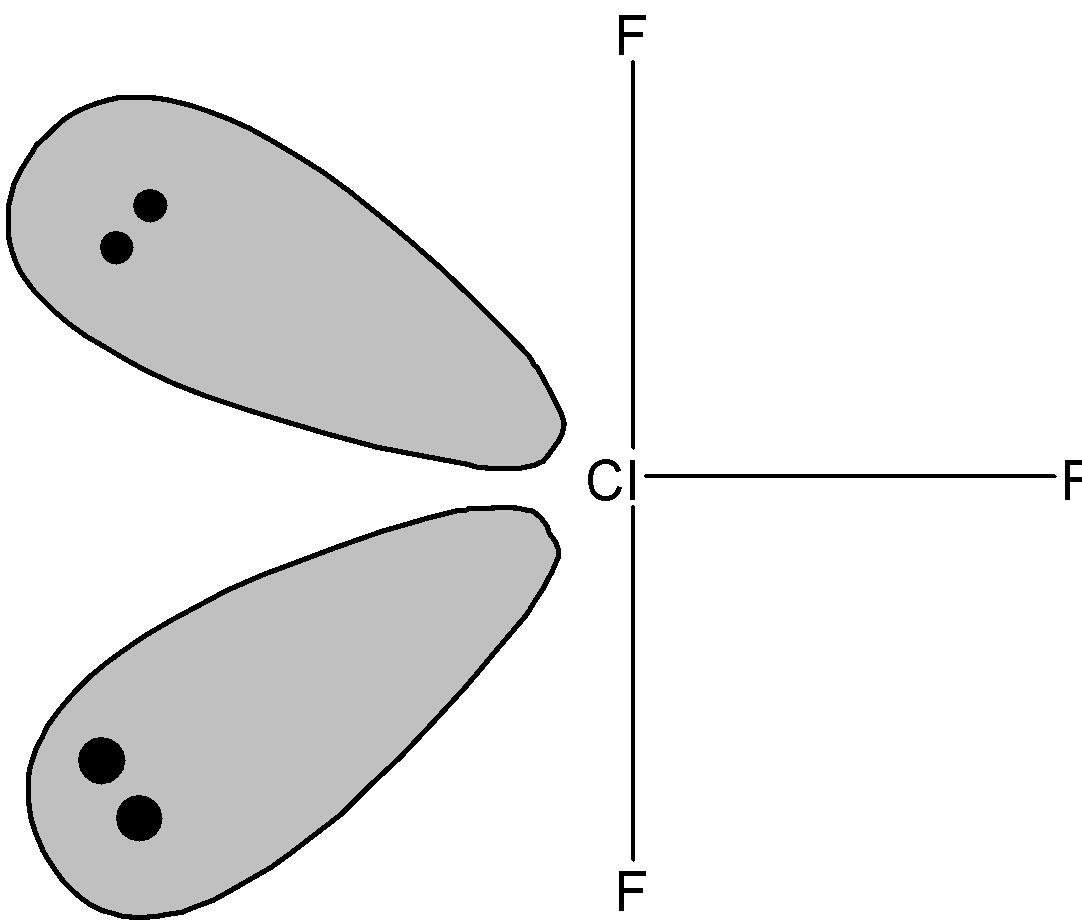
What is the shape of
(A) Trigonal planar
(B) Trigonal pyramidal
(C) T-shaped
(D) Tetrahedral
Answer
471k+ views
Hint: The valence shell electron pair repulsion (VSEPR) theory is used to determine the shape of molecules. According to VSEPR theory the lone pair-lone pair has the maximum repulsion followed by the bond pair-lone pair and bond pair –bond pair. In
Complete Solution :
In
Chlorine atom has seven valence electrons. In
The
Now let’s determine the electron pair in
There are a total of 5 electron pairs in
Now we know that

Therefore,
So, the correct answer is “Option C”.
Note: From local observation, we can say that
Complete Solution :
In
Chlorine atom has seven valence electrons. In
The
Now let’s determine the electron pair in
There are a total of 5 electron pairs in
Now we know that

Therefore,
So, the correct answer is “Option C”.
Note: From local observation, we can say that
Recently Updated Pages
Master Class 11 Economics: Engaging Questions & Answers for Success

Master Class 11 Business Studies: Engaging Questions & Answers for Success

Master Class 11 Accountancy: Engaging Questions & Answers for Success

Master Class 11 English: Engaging Questions & Answers for Success

Master Class 11 Computer Science: Engaging Questions & Answers for Success

Master Class 11 Maths: Engaging Questions & Answers for Success

Trending doubts
State and prove Bernoullis theorem class 11 physics CBSE

What are Quantum numbers Explain the quantum number class 11 chemistry CBSE

Write the differences between monocot plants and dicot class 11 biology CBSE

Why is steel more elastic than rubber class 11 physics CBSE

Explain why a There is no atmosphere on the moon b class 11 physics CBSE

1 ton equals to A 100 kg B 1000 kg C 10 kg D 10000 class 11 physics CBSE




